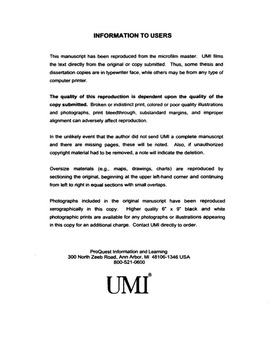| dc.contributor.advisor | Rundstrom, Robert A., | en_US |
| dc.contributor.author | Robertson, David Stuart. | en_US |
| dc.date.accessioned | 2013-08-16T12:18:26Z | |
| dc.date.available | 2013-08-16T12:18:26Z | |
| dc.date.issued | 2001 | en_US |
| dc.identifier.uri | https://hdl.handle.net/11244/397 | |
| dc.description.abstract | Outsiders commonly view historic mining landscapes---defunct mineral extraction and processing areas and associated settlement communities---as troubled by dereliction and impermanence. Residents, however, may regard these locales in more complex and positive ways. Through a set of case studies, this research interprets and compares the meaning historic mining towns hold as places and investigates the related cultural processes of community persistence and landscape preservation. Place perception is explored from the mineral discovery phase through mine closure and deindustrialization in Toluca, Illinois; Cokedale, Colorado; and Picher, Oklahoma. The case studies affirm that mining landscapes are perceptually complex, that community survival is a common phenomenon in one-time mining regions, and that the sometimes unsightly physical trappings of mining have meaning for residents and deserve to be preserved. In each study site, the physical and cultural characteristics of the mining way of life are shown to be constitutive of local identity. These industry-based attachments to place have survived mine closure and facilitated community persistence. They are also reinforced by the mining landscape, whose preservation is important to maintaining a local sense of place. I conclude that the historic mining town is a locale of enduring settlement and that attachment to place is not necessarily wedded to aesthetic attributes or to the physical and economic support a landscape provides for survival. Resident attachment to a degraded landscape produces a range of economic, environmental, and preservation challenges that are important to overcome, for the historic mining town serves as a valued community and home. | en_US |
| dc.format.extent | ix, 326 leaves : | en_US |
| dc.subject | Geography. | en_US |
| dc.subject | Historic sites. | en_US |
| dc.subject | Landscape assessment. | en_US |
| dc.subject | Historic mines. | en_US |
| dc.title | Enduring places: Landscape meaning, community persistence, and preservation in the historic mining town. | en_US |
| dc.type | Thesis | en_US |
| dc.thesis.degree | Ph.D. | en_US |
| dc.thesis.degreeDiscipline | Department of Geography and Environmental Sustainability | en_US |
| dc.note | Source: Dissertation Abstracts International, Volume: 62-10, Section: A, page: 3515. | en_US |
| dc.note | Adviser: Robert A. Rundstrom. | en_US |
| ou.identifier | (UMI)AAI3029624 | en_US |
| ou.group | College of Atmospheric & Geographic Sciences::Department of Geography and Environmental Sustainability | |
